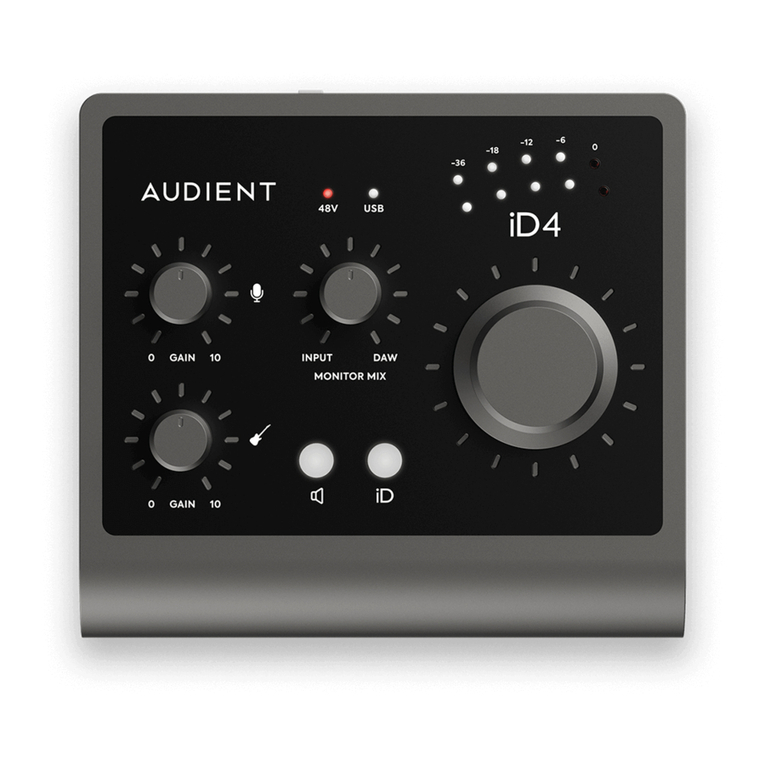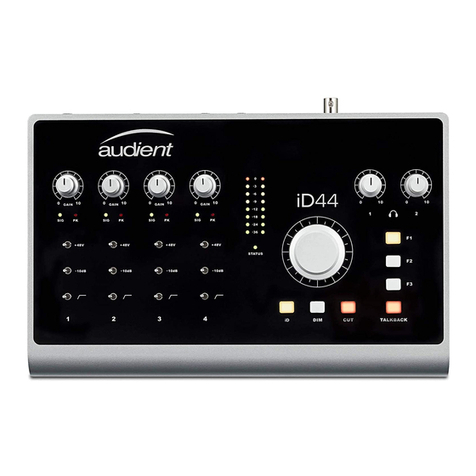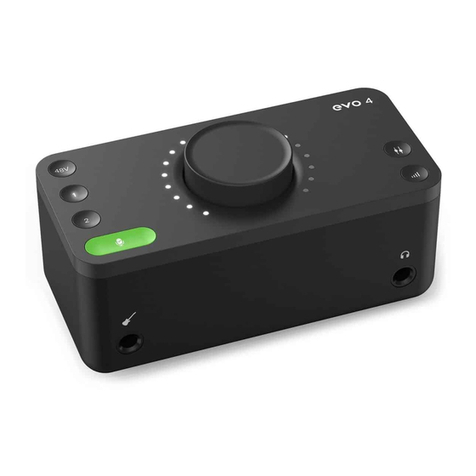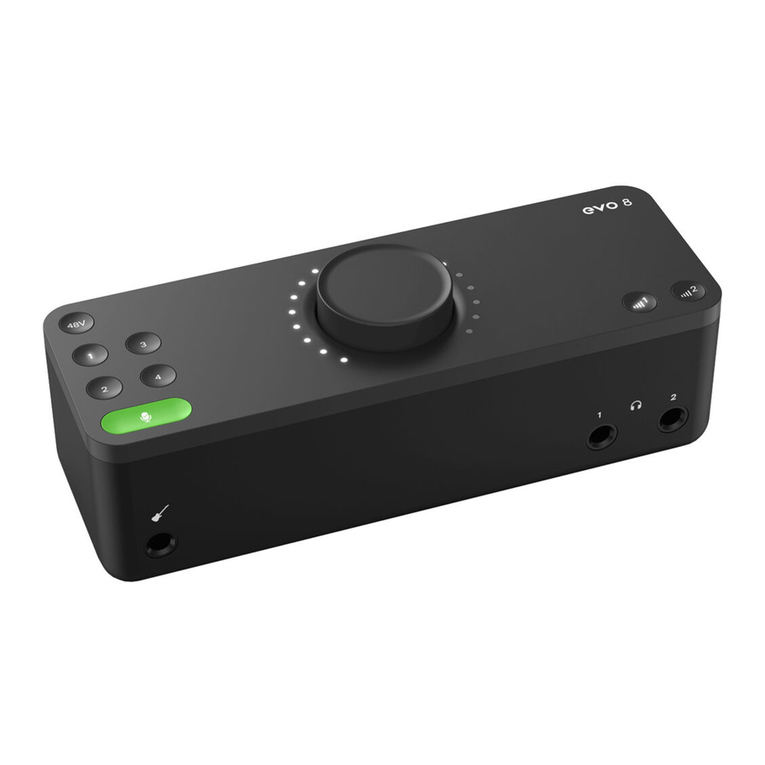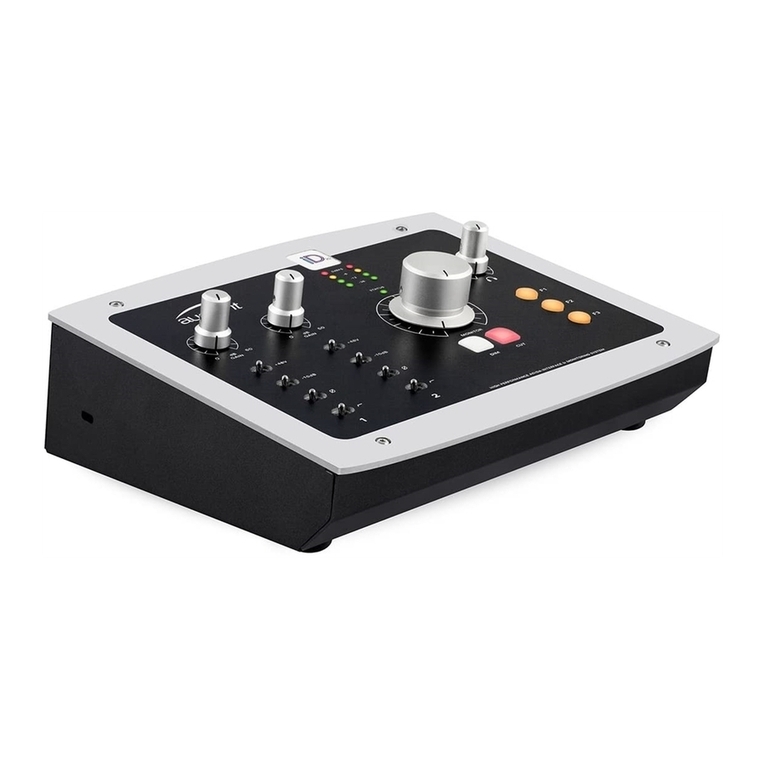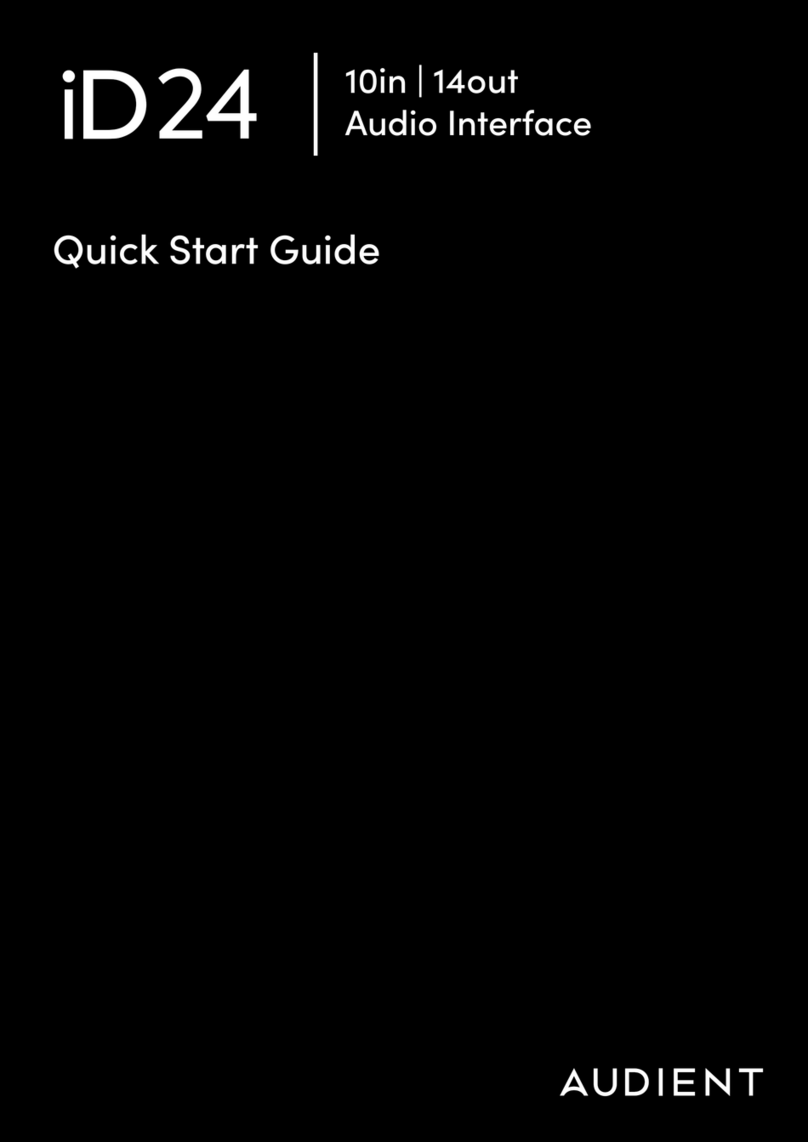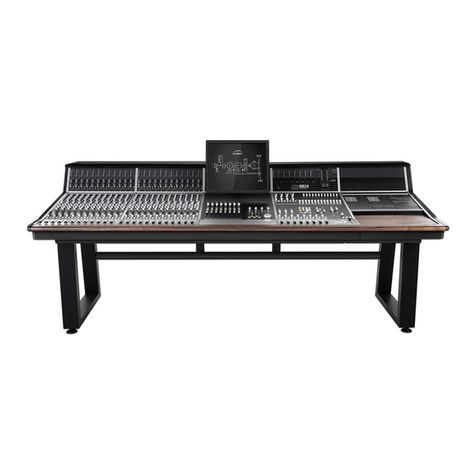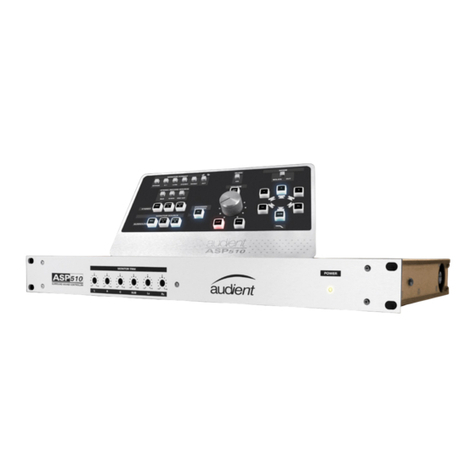
DECLARATION OF CONFORMITIES
Re-orient or relocate the receiving
antenna
01 Increase the separation between the
equipment and receiver
02
03 Connect the equipment into an
outlet on a dierent circuit from that
to which the receiver is connected 04 Consult the dealer or an experienced
radio/TV technician for help
We, EVO Audient, Aspect House, Herriard, Hampshire, RG25 2PN, UK,
01256 381944, declare under our sole responsibility that the product EVO 16
complies with Part 15 of FCC Rules.
Operation is subject to the following two conditions:
1. This device may not cause harmful interference,
2. This device must accept any interference received,
including interference that may cause undesired operation
Audient Ltd has conformed where applicable, to the European Union’s Directive
EN 63000:2018 on Restrictions of Hazardous Substances (RoHS) as well as the following
sections of California law which refer to RoHS, namely sections 25214.10, 25214.10.2, and 58012,
Health and Safety Code; Section 42475.2, Public Resources
We, EVO Audient, declare that the product, the EVO 16, to which this declaration
relates, is in material conformity with the appropriate CE standards and
directives for an audio product designed for consumer use.
We, EVO Audient, declare that the product, the EVO 16, to which this declaration
relates, is in material conformity with the appropriate UKCA standards and
directives for an audio product designed for consumer use.
Under an environment with electrostatic discharge, the device may cease to output sound
(EUT could not operate properly). This requires the user reset the device by unplugging & re-
connecting to host computer.
As a device that provides power to other equipment power management features are
inappropriate for this product.
DECLARATION DECLARATION
This apparatus has been tested and found to comply with the limits of
a class-A digital device, pursuant to Part 15B of the FCC Rules. These
limits are designed to provide reasonable protection against harmful
interference in a residential installation.
This equipment generates, uses and can radiate radio frequency
energy and if not installed and used in accordance with the
instructions, may cause harmful interference to radio communications.
If this equipment does cause harmful interference to radio or television
reception, which can be determined by turning the equipment o and
on, the user is encouraged to try to correct the interference by one or
more of the following measures:
